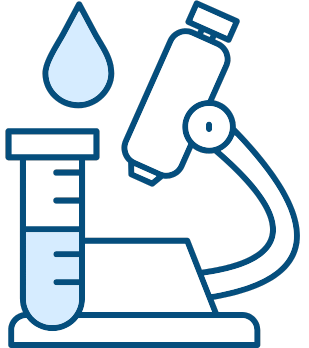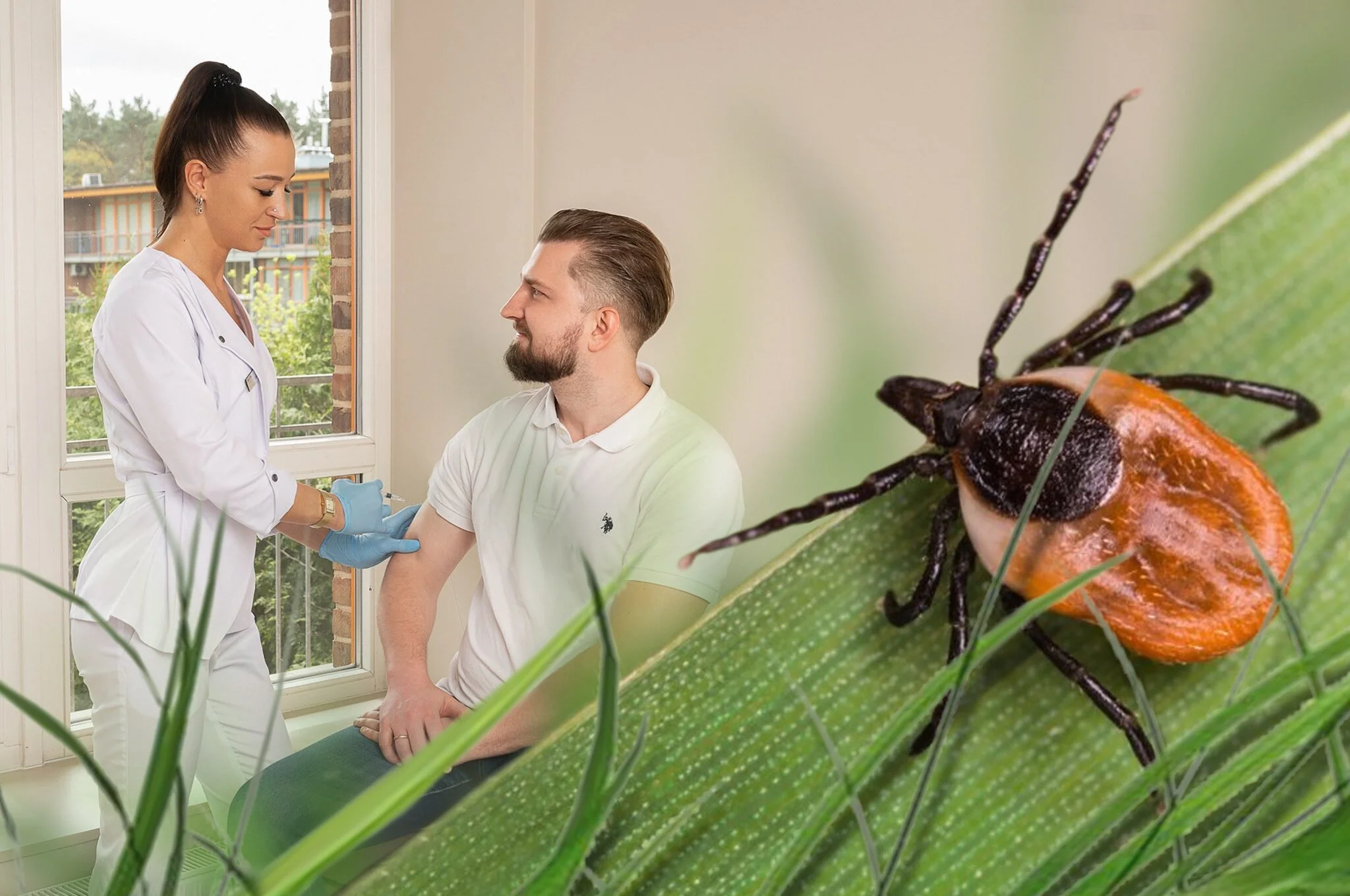When the first rays of spring sunshine begin to caress the earth, not only does nature wake up, but so do dangerous bloodsuckers – ticks. Lyme disease, also known as borreliosis, is one of the most threatening diseases that these tiny parasites can transmit to humans and animals. Although we want to spend as much time as possible in nature during the warmer months, it is important to be aware of this insidious disease, to take all possible protective measures, and to be informed about what Lyme disease looks like and how to spot and treat it.
What is Lyme disease?
Lyme disease, also known as borreliosis, is an infection caused by the Borrelia burgdorferi bacteria, which is transmitted to humans through a tick bite. These parasitic insects feed on the blood of humans and animals and can cause symptoms that resemble flu, including swollen joints, weakness, dizziness, fainting (collapse) and even temporary paralysis.
Ticks carrying these dangerous bacteria are widespread throughout the world, but are particularly common in Europe, Canada and the United States, and especially in the Baltic States. In Lithuania, about 20-25% of ticks are infected with Borrelia burgdorferi, with the highest infection rates in the coastal region.
Symptoms of Lyme disease are often vague and can be mistaken for other illnesses such as viral infections or joint pain, and it can take time to diagnose a bite without noticing the bite site. People who spend a lot of time in grassy or wooded areas where ticks are active are particularly vulnerable. However, do not forget that ticks are also active in urban nature, for example in Vilnius Mountain Park, Vingis Park, etc. If you enjoy spending time outdoors, it is important to be aware of these risk factors so that you can better protect yourself and recognise signs of disease in time.
How to recognise Lyme disease?
Lyme disease manifests itself in a variety of symptoms that appear at different stages of the infection. The most important early sign is a rash, but the disease can also manifest itself in other ways, so it is important to know what to look out for.
Often, a small red bump resembling a mosquito bite mark appears at the site of the tick bite or removal. Usually, this redness after a tick bite disappears within a few days and does not indicate Lyme disease. However, the following are the symptoms of Lyme disease.
Early signs and symptoms (3-30 days after the tick bite):
One of the main symptoms of Lyme disease is Erythema migrans (EM) rash. It occurs in about 70-80% of infected people. The rash gradually spreads over several days and can reach up to 30 cm in diameter. It may be warm to the touch but rarely itches or hurts. Occasionally, the rash may become lighter as it spreads and look like a target or a ‘bull’s-eye’, but most often it is round, red and at least 5 cm across. An EM rash can appear anywhere on the body, but on darker skin it may be less pronounced and harder to see.
Other common symptoms include:
- Fever
- Headache
- Fatigue
- Muscle and joint pain
- Enlarged lymph nodes
Signs and symptoms of advanced Lyme disease (weeks or months after a tick bite):
- Migration of rashes: may occur elsewhere on the body.
- Severe headaches and neck stiffness.
- Facial paralysis: Loss of muscle tone or drooping of part of the face on one or both sides of the face.
- Arthritis: With severe joint pain and swelling, especially in the knees and other large joints.
- Intermittent pain: In tendons, muscles, joints and bones.
- Heartbeat disorders: Irregular heartbeat (Lyme carditis).
- Dizziness or shortness of breath.
- Inflammation of the brain and spinal cord.
- Nerve pain: Stitching pains, numbness or tingling in the hands or feet.
- Neurological Lyme disease: May affect the peripheral or central nervous system, causing facial paralysis, symptoms of meningitis (fever, severe headache or neck stiffness), vision problems, pain and weakness.
It is important to monitor your well-being after a tick bite, as early diagnosis and treatment are essential to avoid serious complications. It is also important not to forget another tick-borne disease, tick-borne encephalitis. Lyme disease and tick-borne encephalitis initially show similar symptoms: fever, general weakness, and head, bone and muscle pain.
Treatment of Lyme disease
Treatment of Lyme disease usually starts with antibiotics. However, additional ozone therapy and a drip of immune-boosting vitamins are recommended to strengthen a body weakened by antibiotics. This therapy helps to improve the patient’s overall condition by improving blood circulation and strengthening the immune system. It is important not only to destroy the infection but also to restore the body’s resistance. Successful treatment of lyme disease depends on timely diagnosis. Since immunity does not develop after a bout of lyme disease, it is possible to be reinfected. Early diagnosis and an effective treatment plan are vital to prevent the progression of the disease and long-term health consequences.
Antibiotics: effective treatment
- The main antibiotics are doxycycline, amoxicillin and cefuroxime axathil. These drugs are the best against the Borrelia bacteria that cause Lyme disease.
- Duration of treatment: Antibiotics are usually given for 10-20 days, depending on the severity of the disease. For more severe cases where the nervous system is affected or arthritis develops, intravenous antibiotic therapy may be given.
- Important to remember: To prevent complications, it is essential to complete the full course of antibiotics, even if the symptoms disappear earlier.
Ozone Therapy: additional help
- Therapy principle: Ozone therapy uses ozone as a powerful natural oxidant that improves circulation, strengthens the immune system and reduces inflammation. This method is useful not only for treating illnesses, but also for general health care.
- The treatment involves saturating the patient’s blood with ozone and returning it to the body. This helps to improve the quality of the blood and promotes a more efficient transport of oxygen to the tissues.
- Broad applications: In addition to being used as an adjunct treatment for Lyme disease, ozone therapy is also widely used to treat a wide range of other disorders such as gastrointestinal diseases, autoimmune conditions, and cardiovascular diseases.
Using a combination of antibiotic treatment and additional ozone therapy treatments after a course of antibiotics can effectively treat Lyme disease and reduce the risk of long-term effects. It is always important to consult a doctor to discuss an individual treatment plan based on the patient’s condition and specific needs.
How to avoid Lyme disease: key preventive measures
As there is no vaccine for Lyme disease, it is important to prepare properly and take all preventive measures to protect yourself from tick bites. One of the most effective ways to prevent Lyme disease is to avoid areas where ticks are often found, such as forests, scrubland and meadows with tall grass. However, this is not a realistic option for many Lithuanians, so it is particularly important to follow these tips when outdoors:
- Avoid tall grass and bushes:
Ticks tend to hide in tall grass and bushes, so try to avoid these areas.
- Dressing appropriately:
Wear long trousers tucked into your socks, a long-sleeved shirt and closed shoes. Wear light-coloured clothing to help you spot ticks.
- Protect your head:
Wear a scarf, hat or hood that fits snugly on your head.
- Use repellents:
Use repellents with DEET, which is an effective tick repellent.
- Check up on yourself and your loved ones:
When you return from the outdoors, check yourself, your children and your animals carefully for ticks. In particular, check areas where ticks tend to congregate, such as warm areas of the body: armpits, groin, underarms, under socks, under clocks etc.
- Remove ticks as soon as possible:
Ticks need to feed for about 24 hours to transmit the disease, so remove them as soon as possible.
- Use a sponge or cloth in the shower:
In the shower, use a sponge or cloth to remove any mites that walk on your body.
- Consult your vet about pet protection:
Consult your vet for appropriate measures to protect pets from tick bites.
Caution and prevention are very important because often people do not feel the tick bite and may not notice the rash, which is a sign of Lyme disease infection. In addition to Lyme disease, ticks also spread tick-borne encephalitis, which can be prevented by vaccination. By getting vaccinated against tick-borne encephalitis, you can significantly reduce your risk of contracting this dangerous disease. By following these simple but effective tips, you can significantly reduce your risk of tick-borne diseases and keep yourself and your loved ones healthy.
To summarise
Lyme disease is a serious health problem that must be treated responsibly. In the absence of vaccines against this infection, preventive measures are necessary to protect against tick bites. Proper clothing, the use of repellents and thorough body checks are simple but very effective ways to reduce the risk of Lyme disease.
Early diagnosis and a properly designed treatment plan are essential to avoid the progression of the disease and long-term health consequences. The use of antibiotics, combined with supplementary vitamin and later ozone therapy, can effectively fight the infection and strengthen the body’s resistance. It is always important to consult your doctor to discuss an individual treatment plan based on your health condition and needs.




